Easy Marine Traffic AIS sharing from your boat, FloatHub is first
The screen above may look like an app running exclusively on the boat, but actually all that data, including AIS targets, was being constantly uploaded by Gizmo’s FloatHub monitoring system and then presented in near realtime on the associated private FloatHub website. So boat-to-cloud AIS relaying is yet another new feature in the exciting but confusing world of remote boat monitoring, though you may wonder why?
For starters, the new feature could have allowed fellow FloatHub users to watch Gizmo tangle with fast ferries off New London, Connecticut, as I transited that area a few weeks ago. But there’s lots more benefit to sharing the AIS data your boat receives, and FloatHub — first tested here when it was Kickstarter project — has recently introduced or announced other features I’ll detail in this entry’s second half.
Why share your boat’s AIS?
What’s really impressive about FloatHub’s AIS relay implementation is that you can have the target information shared with MarineTraffic and/or AISHub by just clicking on the option at your online FH setup pages. And although MarineTraffic — the big daddy of online AIS tracking sites — may have over 150,000 vessels in sight as I write, many boats with AIS don’t show because there simply aren’t enough volunteers supplying the data.
Most volunteer AIS receiving stations are on land and they are not overly difficult to set up (as I described in 2012, and will update soon). But what if you could help the general boating community, improve your own boat’s online AIS tracking for friends and family, and also receive some very nice extra Marine Traffic features just by wiring your boat’s existing AIS to a monitoring system already easily worth its $149 price tag?
Incidentally, it does take more effort to register your AIS station at MT (and/or AISHub) and then ask FloatHub to set up custom sharing — as shown on Gizmo’s FH Sharing screen above –but that’s the path to the extra MT features detailed below.
The holes in Marine Traffic coverage particularly affect smaller boats with low-power Class B AIS, so being an MT “roaming station” is a benefit for fellow Class B boaters who enjoy being tracked themselves and/or using MT to follow cruising friends. And because you’ll be tracking yourself as well, it also means that you can give your MT Vessel Details page link — Gizmo’s page shown above, live link here — to friends and family with some confidence that it will show your current position.
In fact, largely thanks to the FloatHub sharing system, Gizmo has been well tracked on MT since I left New Bern, NC, in early April, and MT has nicely saved my tracks and assembled a table of ports visited. Note that the Vessels Details page is free to all. Actually, every vessel ever tracked by MT has a Details page — there are 862,900 total right now — and anyone can upload photos to it. (There’s no question anymore that AIS information is public, so the privacy argument is moot unless you’re willing to be invisible to all AIS equipped vessels.)
- MT Pro subscription unlocks many more details
- Also many types of vessel notifications
- And three months of tracking
- Even multiple vessels at once
However, access to Marine Traffic data and features has gotten quite limited without one or more of many service subscriptions, which have gotten complicated and expensive (probably because they’re primarily oriented to the commercial marine world). But then again volunteer AIS receiving station operators (and photo contributors) receive simpler “legacy” subscriptions if they meet certain thresholds, and I’ve found my earned Pro plan to be quite valuable over the last year. (I first got it when I set up a Digital Yacht AISNet shore station at my Camden home, more info below, but my new roaming boat station is quickly meeting the requirements.)
The screens above illustrate some of the MT Pro benefits I enjoy, like the detailed history of Gizmo’s (or any AIS vessel’s) activity along with fine-grained notifications about what boats of interest are up to. I can also access three months of tracking for any vessel, illustrated above with Lunacy’s recent snowbird passage (further documented by Charlie Doane on SailFeed). I can also track multiple boats at once and choose nautical charts any time I’m using the MT Live Map. And notice the absence of advertising on all my MT screenshots. There are more Pro features still, but suffice to say that Marine Traffic becomes a much more useful site than the free version, which is a tasty carrot for AIS station volunteers.
A less-than-obvious way to learn more about volunteer Marine Traffic stations is to enable the Station layer on the MT Live Map (as I did on the Lunacy tracking screen). Or you can see the details of one station by clicking on “AIS Source” shown with vessel details in most implementations of MT. Either way you could find the M/V Gizmo roaming station details above, and my boat station also has a permanent URL link as does my home station.
I tried to be as detailed as possible about Gizmo’s station setup and recently modified what you see above because the FloatHub is now out of beta testing and available to all (with full details here, along with one of my test screens of AIS busy Hampton Roads). The setup may look complicated but in fact, all I had to do was wire the previously unused NMEA 0183 output on Gizmo’s Vesper XB8000 to the FloatHub’s high speed 0183 port, and enable AIS relaying in the FH system.
Before getting into what else I gained from that setup, note my equipment list emphasis on “no PC needed.” I think that’s a big deal, particularly on boats like mine that can’t easily run a PC constantly. But even ashore, a PC is often the weak link in a volunteer AIS station system, which is why receivers like the DY AISnet and the AMEC WideLink R150GE I’m about to test use Ethernet and/or WiFi to stream the target data right to MT (or other data aggregation sites), no local computer needed.
FloatHub AIS & more
So here’s the FloatHub with AIS relaying firmware installed (upside down) on Gizmo, the two green LEDs indicating that it has a WiFi connection to the Internet and that its internal GPS has a position. I haven’t mentioned it yet, but of course, a roaming AIS station has to have an Internet connection. But I’ve been using one FloatHub or another since I first wrote about them and know that they can maintain a very low bandwidth WiFi connection for months at a time, including automatic recovery from outages, and you can be alerted if the connection is no longer seen by the FH cloud. That’s how I knew, for instance, that the New Bern marina WiFi I wrote about was actually quite solid even though many users started having trouble with its bandwidth.
I’ll add that a FloatHub can store quite a lot of boat information for forwarding when a WiFi connection is reestablished, but they don’t store AIS data as there’s no point. On the other hand, the FH AIS data seemed to make it through my boat-WiFi-to-cell-phone-hotspot even when the connection seemed a little dicey otherwise. That’s why Gizmo was usefully tracking on Marine Traffic even though I was far from shore stations as I prepared to cross the Deleware Bay shipping lanes, as discussed in my 24-hour watch entry (Whose tracking map was provided by FloatHub, includes enough resolution to zoom in deep, and similar will eventually be available to all FloatHub users.)
A neat thing about using FloatHub with the output of Gizmo’s Vesper XB8000 is that FH also collects, displays and archives the boat data that the 8000 gateways and multiplexes into 0183 (and Wifi) from the boat’s NMEA 2000 network. So now my FloatHub monitoring includes wind, depth, water temp, and more, at least when the N2K network is powered up. The same results can be achieved in other ways, using the FloatHub’s other 0183 port, a dedicated multiplexer, an N2K-to-0183 gateway, or some combination.
In case some sharp readers notice all the bilge activity logged on May 15, there is an interesting story there. For now, I’ll just note that I was departing Chesapeake Bay into open seas — while also assuring my dear spouse at home about how well set up I was for the long watch ahead — exactly when the seacock plumbing mistake revealed itself and caused a deluge of text messages from Gizmo’s many test monitoring systems. It was an awkward moment, but definitely more proof of monitoring value. Whole story to come.
FloatHub has already added other improvements besides the AIS relaying, like the new Bais settings seen above. I don’t know if the FH voltmeters are off or if there is voltage loss in the wire routes from Gizmo’s main and engine banks, but the values logged were always slightly lower than what I see on boat’s best voltmeters. Actually, that doesn’t matter a whole lot — all you really need to mind battery voltage, and other things, are values that correlate to the real ones as they go up and down — but it is nice to have Floathub voltages (and air temp) reading fairly correctly thanks to the bias adjustment.
There are lots more FloatHub improvements coming, like the automatic breakout of your data into trips and the option to download such data for use elsewhere (like Google Earth). But the one I’m especially looking forward is the ability to graph data for less than one month. FH already includes numerous ways to query its monthly graphs with mouse clicks and hovers (that are hard to illustrate with static screenshots) but the screen above shows what a week graph looks like only because the beta test system began operations on April 13.
During that week, the engine battery and bilge pump monitoring were only planned, not wired, but the Vesper 0183 connection was working. So I have graphic evidence that when Gizmo first got underway this year — see the orange STW line — the wind speed almost simultaneously went from calm to very choppy Neuse River and then died down right once we’d made Wayfarer’s Cove for bottom paint. I can also visualize my boating life in terms of battery draining nights aboard at anchor, sunny solar days, underway charging, and occasional shore power. And that sort of thing will be even more fun and/or useful when I can zoom into individual days.
But the much bigger news is that FloatHub WiFi+Cellular is close to release, and the details sound smart and reasonable to me. I’ll let FH partner Thor Sigvaldason explain:
The new FloatHub WiFi+Cellular is using 3g bands (part of the delay was in moving on from working prototypes that were 2G only). One version will work anywhere in the Americas and Australia, another is Europe, Africa, & Asia (first ten vessels to go transatlantic or transpacific will get a second device for their new frequency with our compliments. :-). For practical purposes in most of US, it will jump back and forth between T-Mobile and AT&T (whichever is putting out the stronger signal).
Device will come with it’s own SIM already in it (hemispheric coverage) and will not cost any extra for “normal” data usage. That is, with the regular $9.99 Enhanced Monitoring Plan, users get up to 5 MB of cellular data. That is more than enough to cover mixed WiFi/cellular coverage. If they are in a scenario where they want to use 100% cellular and have a _lot_ of traffic (boat frequently used, lots of sensors, AIS relaying over cellular, etc.), they can have it cut out at any data limit they like and pay $0.50 per MB for as much as they want up to that limit (over the 5 that come with the plan). Really hard to go over 10 MB or so in most scenarios, but sky’s the limit on AIS relaying if in a busy area (there is an option to only relay AIS over WiFi and just use cellular for regular onboard monitoring data, in fact that is the default).



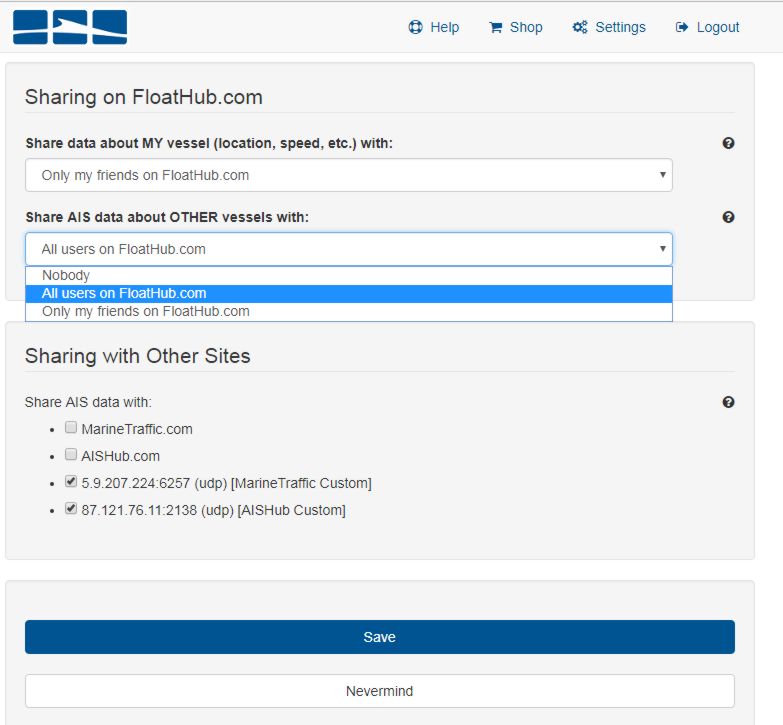
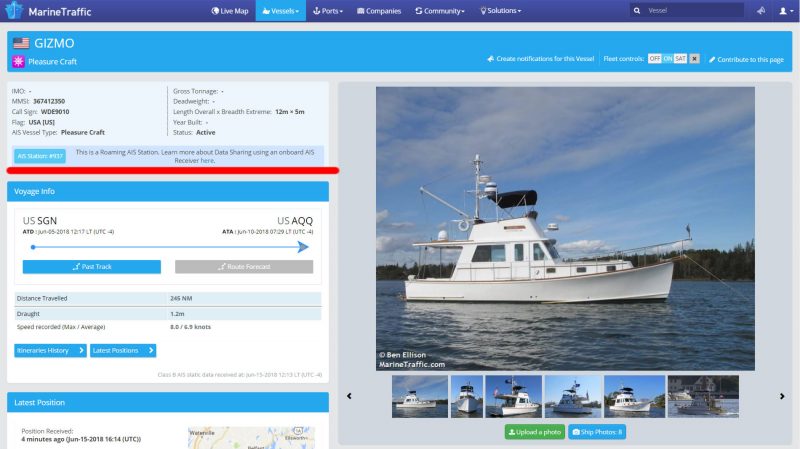



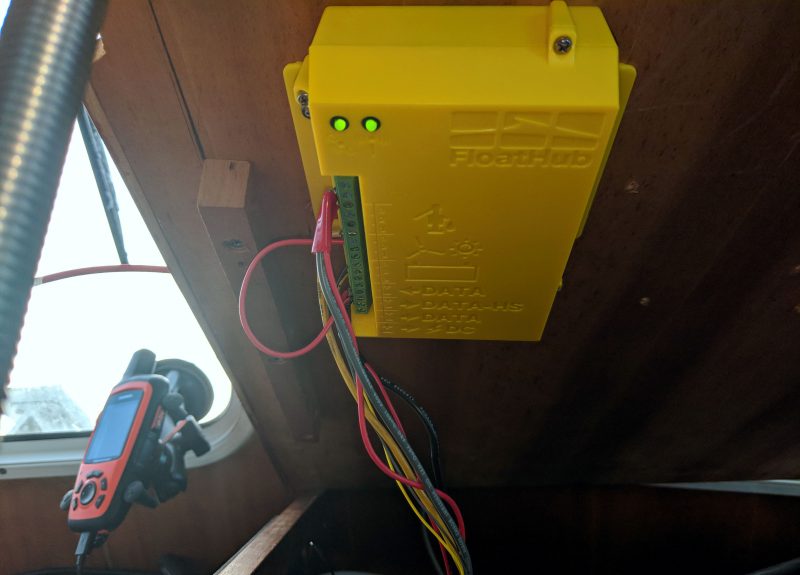
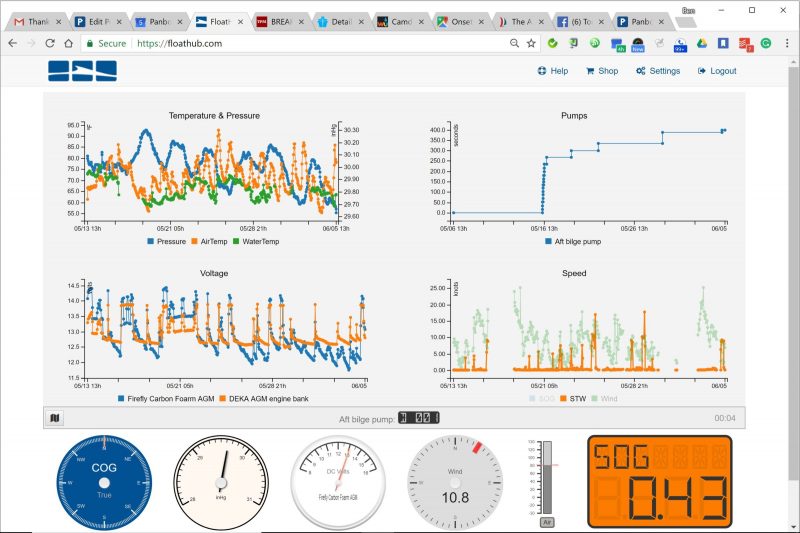
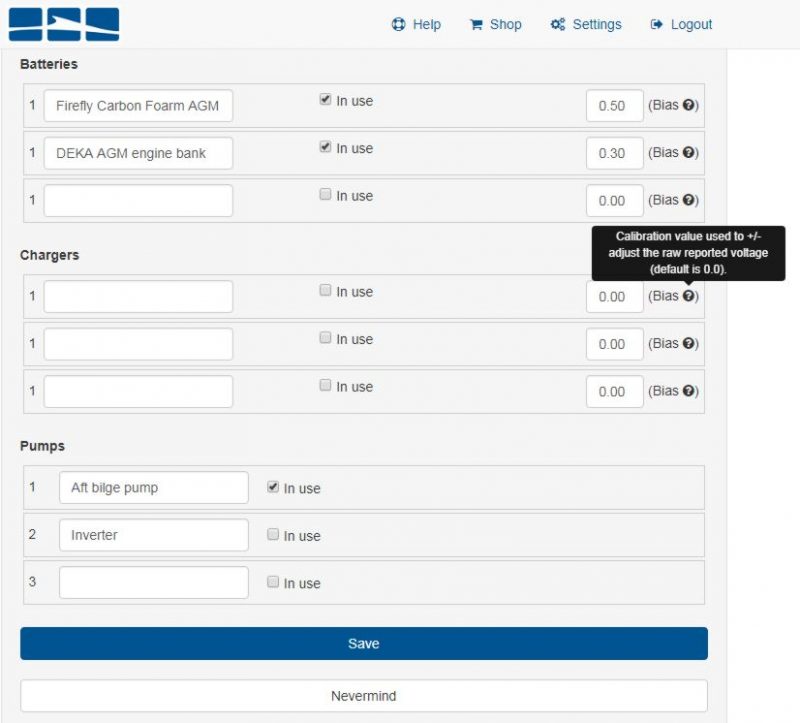
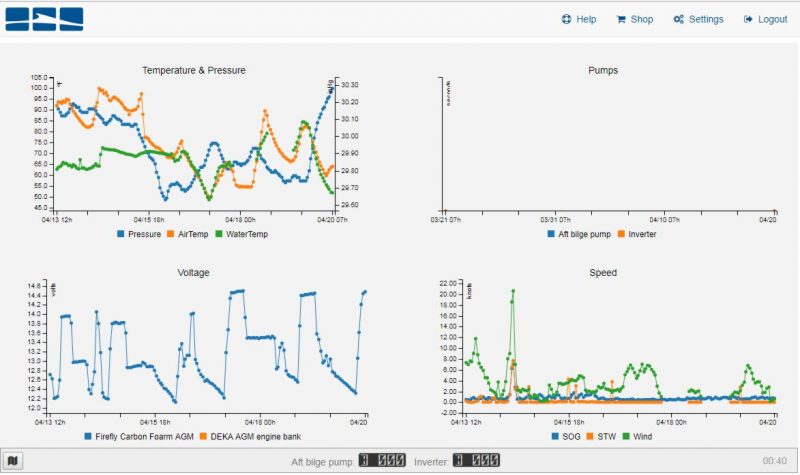

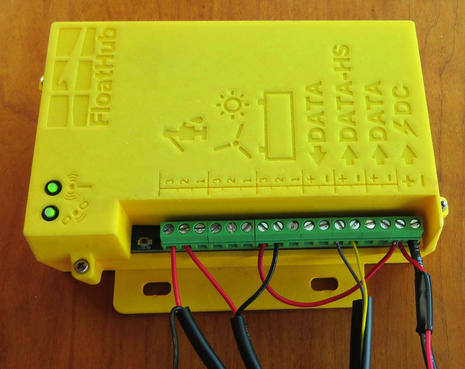









I use FloatHub as soon as I get my first play with Kickstarter.
From the very beginning, it works nonstop without any problem.
Next week I will connect AIS Em-Trak B-350.
I use all 9 ports to control the boat.
All data is available on the FloatHub website.
Thanks for the report, Christopher, but I think you mean that use all 9 ports to monitor the boat?
One thing I’m pretty sure that FloatHub lacks compared to many other monitoring systems is the ability to activate relays.
Also, FloatHub just sent this update about the cellular model:
“We should be actually (actually!) selling cellular units in early July. We already shipped all the KickStarter cellular units, plus a couple of other sales/beta testers, but we have shipment of more components for proper inventory due on July 7. “
Yes Ben I use to monitor the boat, sorry but my English is not perfect.
I am in contact with the FloatHub Support Team, I have sent several proposals for amendments to the module.
Sorry if I sounded rude, Christopher. I just like to maintain the distinction between monitoring and control functions.
An interesting and timely article Ben. My vessel has just become a roaming receiving station for Marine Traffic, but I went a different way. I have been watching the dropping prices of cheap mini-Win 10 Pc’s with built-in Wi-Fi. I purchased one from China for AUD $130 (approx. US$100) including delivery. Marine Traffic provide a freeware application that runs as a service on Win 10. I simply plugged a USB lead from my Vesper Watchmate 850 to the PC, configured the Serial port and the app with the port details provided by Marine Traffic … the PC uses Wi-Fi to connect to my 4G router …and I was online …It’s been running for over a week now, no hassles. Totally agree about the benefits of being monitored by Marine Traffic full time regardless of the location of land based receiving stations … and all my nearby cruising mates are automatically monitored as well!
Regards
Hi, Ian, and thanks for your AIS volunteer service. I think that most of the MT roaming stations already out there are using PC’s. Here are some examples doing good work in my area right now:
https://www.marinetraffic.com/en/ais/details/ships/shipid:400648/
https://www.marinetraffic.com/en/ais/details/ships/shipid:450795/
But using a PC seems like overkill for simply converting AIS info into IP format and sending it to a server, and a possible point of failure in many cases.
Actually I think it may be possible for Vesper or otherr AIS transciever manufacturers to built the function right in, and I like to think that at least Vesper has it on their road map 😉
Hi Ben, Yes, I used to think that about a PC as well, but these new mini-PCs are changing my mind. They are only 5 x 5 x 1 inch in size, they are fanless and diskless – so no moving parts. I have it operating without a screen as I can remote control into it from my iPad … so at a price below most task specific devices, I can setup a generic ‘processor’, and run the app of my choice to perform the task as required. In the future, I am in control of updates…. I can even change it’s task in the future …
Totally agree that the obvious way forward for Vesper is to include this functionality in their wifi enabled AIS units … I keep looking at updating my Watchmate 850 to a new Vision. The watchmate has been ‘handsdown’ the best, most useful, piece of equipment I ever installed on my boat. Their anchor-watch functionality is tremendous.
Ben, I’m sorry, it’s my fault.
When writing about boat monitoring, I also use the Victron VRM online system.
GSM / LTE communication is by Teletronica RUT240 and has been working for over a year without any problem.
It’s the same router that Digital Yacht uses in the 4G Connect system.
Just got mine – awesome – only have the AIS connected at the moment – but as far as setting up marinetraffic without the pass thru, it was as easy as clicking signup, and then opening a ticket with floathub who had it configured within 3 minutes!
Sharing AIS traffic over the internet seems a generous thing to do, and meanwhile there’s no harm to you and your vessel because you benefit from your live AIS display. But for the internet “downloadees” relying on internet AIS could be a different story entirely.
I believe that internet AIS can be quite helpful as long as its limitations are respected. A couple years ago in the Puget Sound area I experienced (and documented) two major faults in internet AIS coverage that I experienced within a one-week period. I now use those examples in my AIS presentations to advise *strongly* against relying on internet AIS for collision avoidance, For general situational awareness, OK; but when your life is on the line in restricted viz, No Way. In both my examples I was receiving Marine Traffic via T-Mobile cellular data, which probably added to the latency I experienced; and the 30 second transmission cycle of Class-B was in one case partly to blame. But in one instance it was a Washington State Ferry’s Class A that was considerably delayed. In fact, I had already driven onto the ferry, but Marine Traffic showed my very vessel still about a mile out from docking. In restricted visibility such errors could very well contribute to collision and loss of life.
I thoroughly agree, Larry. Using Internet AIS for collision avoidance is a poor idea in all the places I’ve looked at Internet AIS versus real conditions. I did describe how it was a help to me on the recent trip north, but that was only for an advance warning before real onboard AIS came into play:
https://panbo.com/standing-a-24-hour-watch-am-i-nuts/